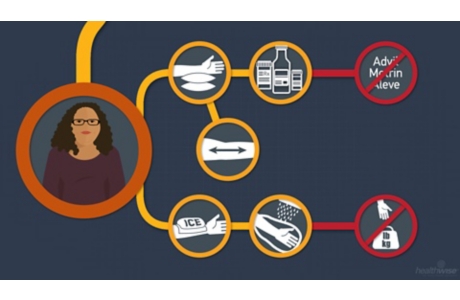Vascular Access Failure
Topic Overview

Dialysis is a lifesaving treatment when you have kidney failure. To keep up a regular dialysis schedule, you need a sturdy dialysis access where blood can flow in and out of the body. It must have a good, steady blood flow.
Any type of dialysis access has some risk of failure. So it’s important to always protect your access and be alert for signs of clotting or infection.
- Call your doctor right away about any signs of trouble.
- Make a habit of talking with your dialysis nurses and doctor about how well your access is doing.
If your dialysis access fails, it will be repaired or replaced. You and your doctor will choose your next best option for dialysis access.
What are the options for hemodialysis access?
Permanent access
There are two permanent access types:
- An arteriovenous (AV) graft is made by inserting a small tube between an artery and a vein, usually in the upper arm or forearm. A graft is a good choice if you have small veins or other problems. It can sometimes be used as soon as 1 week after placement. But a graft may not last as long as a fistula. It’s more likely to get infected or to get narrow and cause blood clots.
- An arteriovenous (AV) fistula is made by directly connecting an artery to a vein, usually in the upper arm or forearm. A fistula tends to last longer than a graft, and it’s less likely to cause blood clots and get infected. You have to plan ahead for a fistula, because it needs at least several months to heal after placement. But a fistula is the most dependable access type.
Short-term dialysis access
If you need to start dialysis right away, your doctor may place a tube in a vein, usually in your neck or chest. This is called a central venous catheter. You can use it while your permanent access heals.
How do you help prevent access failure?
Every day, check your access to be sure it’s in good condition. Pay attention to how you feel. Call your doctor or dialysis team right away if you have any signs of infection or a blood clot, swelling, or unusual skin color.
- Be alert for signs of infection, such as:
- Increased pain.
- Swelling, redness, or red streaks.
- Blood or pus draining from the access.
- Numbness.
- Fever.
- Check your access for a pulse, or “thrill.” A thrill is a vibration. It’s a good sign that you don’t have a blood clot. To feel it, place your first two fingers over the access, or listen with a stethoscope. You should be able to hear a regular whooshing sound. This is called a bruit (say “BROO-ee”).
- Check for signs of good circulation. It’s a problem if your hand or arm is cool or pale or changes color, or if you have sudden bulging around your access.
- After you have dialysis, call your dialysis team right away if bleeding from your access lasts longer than usual.
How to protect your access
- Do not lift anything heavy with your access arm.
- Do not bump your access arm.
- Don’t wear tight clothing or jewelry over that arm.
- Do not sleep with your access arm under your body.
- Do not have blood drawn or blood pressure measured on your access arm.
- Don’t put cream or lotion on or near the access. Keep the area clean and dry.
What do you do when a dialysis access fails?
When a dialysis access fails, your doctor needs to quickly repair or replace it so you can keep up with your dialysis sessions.
- If blood flow is blocked, your doctor may be able to clear it with a tiny balloon or tube (stent). Sometimes a blood clot can be cleared with blood thinner medicine.
- If your access is infected, your doctor will remove all or part of it. You will have antibiotic treatment for the infection.
- If your access needs time to heal, you will have a tunneled catheter for a few weeks until your permanent access works again.
- If you need a new permanent access, talk to your doctor about your options. If you aren’t a candidate for a fistula, your doctor can create another graft.
For fistula or graft surgery, you will be asleep or get medicine to feel relaxed.
If your access is repaired or you get a fistula, you will probably go home the same day as the surgery. If you get a graft, you may spend 1 night at the hospital. You will probably need to take 1 or 2 days off from work.
Current as of: October 31, 2018
Author: Healthwise Staff
Medical Review:Anne C. Poinier MD – Internal Medicine & E. Gregory Thompson MD – Internal Medicine & Adam Husney MD – Family Medicine & Kathleen Romito MD – Family Medicine & Tushar J. Vachharajani MD, FASN, FACP – Nephrology
This information does not replace the advice of a doctor. Healthwise, Incorporated, disclaims any warranty or liability for your use of this information. Your use of this information means that you agree to the Terms of Use. Learn how we develop our content.



